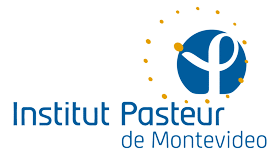Virus-Cell Interactions
Viruses have acquired over time the ability to exploit essential cellular functions to enter and replicate in susceptible cells. Viral entry is a fundamental stage of the infective cycle as it is a major determinant of cell tropism, host range, and pathogenesis. Viruses enter cells by various mechanisms and transport routes, and the first step of viral entry is the binding of viral particles to exposed molecules on the cell membrane, such as proteins, lipids, and/or glycans.
These molecules can be classified into binding factors, responsible for concentrating viral particles on the cell surface, and cell receptors, molecules that actively promote and mediate viral entry.
Likewise, host organisms have developed restriction mechanisms to counteract viral infections, including proteins that block viral entry.
The main objective of our laboratory is to analyze cellular proteins that modulate viral entry, in order to contribute to the development of antiviral therapies for viruses of importance to human health in Uruguay and the region, such as New World arenaviruses (Junín and Machupo), flaviviruses (Zika and Dengue), and coronaviruses (SARS-CoV-2).
Members




Research lines
Analysis of intrinsic viral restriction factors as potential therapeutic targets.
Study of cellular proteins that modulate viral endocytosis.
Innate antiviral immune response.
Main publications
vacio
2021
- Sarute N, Cheng H, Yan Z, Salas-Briceno K, Richner J, Rong L, Ross SR (2021). Signal-regulatory protein alpha is an anti-viral entry factor targeting viruses using endocytic pathways. PLoS Pathog. 17(6):e1009662. https://doi.org/10.1371/journal.ppat.1009662
- Sarute N, Ross SR (2021). The board is set, the pieces are moving: Modulation of New World arenavirus entry by host proteins. PLoS Pathog. 17(6):e1009605.https://doi.org/10.1371/journal.ppat.1009605
2020
- Sarute N, Ross SR (2020). CACNA1S haploinsufficiency confers resistance to New World arenavirus infection. Proc Natl Acad Sci USA. 117(32): 19497-19506. https://doi.org/10.1073/pnas.1920551117.
- Li* JJ, Sarute* N, Lancaster E, Otkiran-Clare G, et al (2020). A recessive Trim2 mutation causes an axonal neuropathy in mice. Neurobiol Dis, 140:104845. https://doi.org/10.1016/j.nbd.2020.104845. *Co-first
2019
- Sarute N, Ibrahim N, Medegan Fagla B, et al (2019). TRIM2, a novel member of the antiviral family, limits new world arenavirus entry. PLoS Biol 17 (2): e3000137. https://doi.org/10.1371/journal.pbio.3000137.
2017
- Sarute N, Ross SR (2017). New World Arenavirus Biology. Annual Reviews of Virology, 4(1):141-158. doi: 10.1146/annurev-virology-101416-042001.

